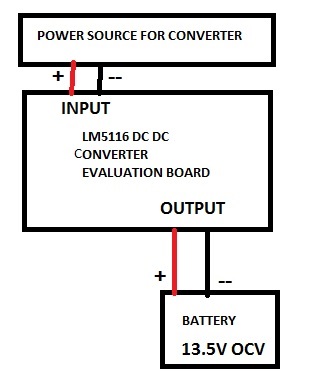Other Parts Discussed in Thread: LM5119
I am testing LM5116 Evaluation Board for its performance and functionality to verify if it satisfies our requirement. The test which I conducted was to connect a battery in parallel with the output of the evaluation board. But there seems to be a drop in the output voltage from required 12V to around 10V when a battery with OCV 13.5V was connected. Kindly provide suggestions to rectify the problem. A demonstrative circuit for the same has been shown below.


